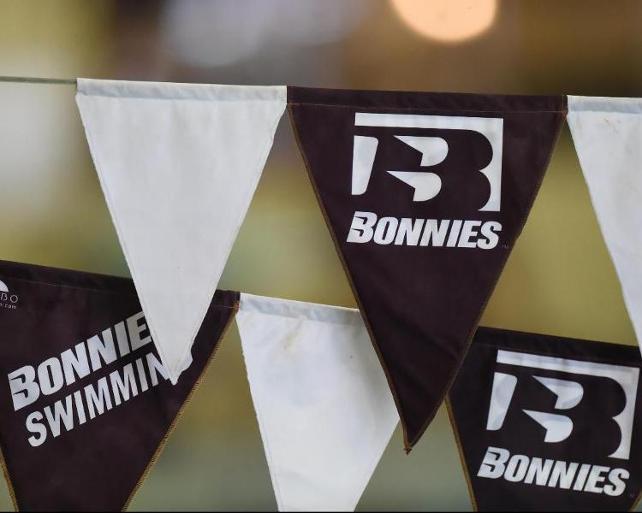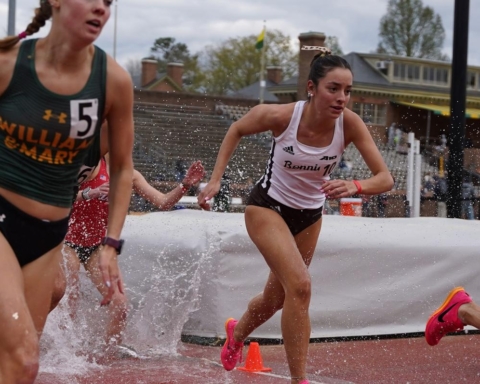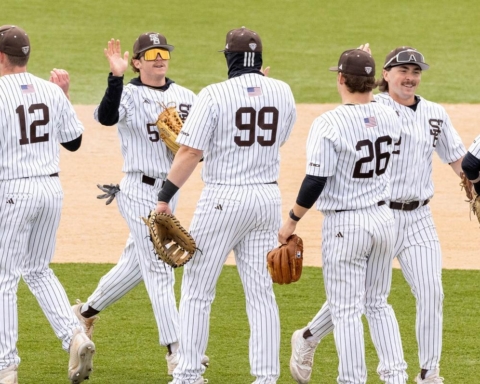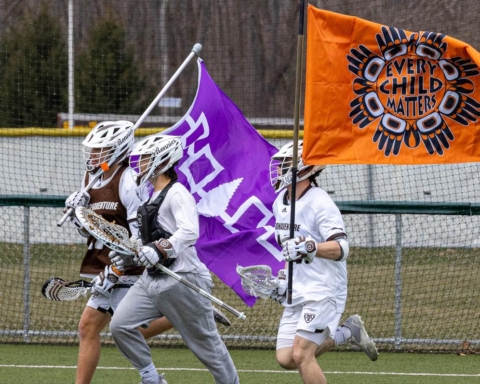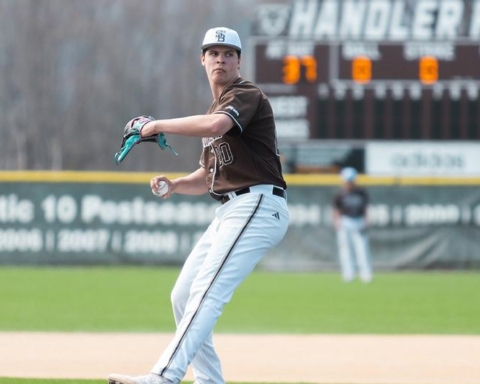As the Atlantic 10 Swimming and Diving Championships comes closer, the athletes on the men’s swim team are continuing to work hard in practices. This season, however, has been different than previous seasons for returning swimmers.
Before this season, the swim team swam together as one team; now, the team is separated by event: distance and sprinters.
Senior backstroker and a member of the distance group, Aidan Wilson said distance swimmers have to focus more on endurance while sprinters work with fast-twitch muscles and perfecting their form and breathing techniques.
“The sprint group is mainly freestyle,” said Wilson. “Some of them may do butterfly since it’s a strong stroke, and you need muscle for it, but the other group is working on strokes or individual medley.”
Along with doing different things in practices, senior freestyler and sprinter Logan Hellwig said the sprint group lifts an extra day a week for strength, while usually not racing farther than 200s, usually 50s or 100s.
“Distance does a lot more yardage in practice, so the practice might be a little longer than ours since we’re usually shorter distances,” said Hellwig. “When they [distance swimmers] are doing 200s in practice, we might be doing only 100s.”
The addition of assistant men’s and women’s swimming coach Logan Arnold this year provided men’s head coach Sean McNamee with something he had never had before by having another coach on the deck.
“You really need to make sure the more resources you have, you’re really utilizing your resources to the best of your ability,” said Arnold. “That’s how we started putting together the groups that are going to benefit from some different training styles.”
As seniors, Wilson and Hellwig have had three years of practicing as one unit, but they said that has not stopped the team from continuing to bond through practices this season.
“Since we’ve been here since freshman year, our group is pretty close compared to past years,” Hellwig said. “We do have different practices, but we practice at the same time every day, so we still see each other all the time, eat together.”
Another change in swim practices happening now is what is called tapering, which is building up energy in the body to store for A10s on Feb. 14 through 17.
Wilson said tapering is like a bit of a rest period, and while the swimmers are still in the water swimming a lot, the yardage progressively lessens.
“We go from doing 7,000 [to] 8,000 plus yards up to 12,000 yards a day, and we cut it,” Wilson said. “[Monday] we did a lot of yards, and it was only 5,000. Basically, by the team we get to right before we leave, we’ll have cut it to around 1,800. It involves more rest every other day, but we still have to get up and keep our energy levels high.”
Part of the taper process causes the body to feel heavy, as Wilson said, but this is due to the body finally being able to heal the muscles after months of hard practices.
“Normally, a week before you race, you think that’s bad,” Wilson said. “But it’s a good thing, because your body is doing the necessary things to heal and get ready. The most important thing is to get us to our taper point as close to A10’s. It’s okay to taper early, to get to your fastest and best-feeling mode before, but you don’t want to do it late.”
Last year, the men’s team finished in a disappointing seventh place at A10s, but Hellwig said the placement was not exactly indicative of the team’s overall performance.
“Last year, it was 60 points from [third] to [seventh], but 60 points is the difference of one individual winning two events, so it’s close,” Hellwig said. “It’s going to come down to if everyone swims the way they’re supposed to.”
George Washington looks to be the runaway favorites to win this season after placing first last year, Wilson said. The competition in the A10 probably won’t be able to take down the Colonials judging by past performances and current times, although the next seven spots are up for grabs.
“If people swim the way they can, we’re thinking we can pull out third,” Wilson said. “It’s going to come down to if a team disqualifies a relay, because that’s 20 points minimum.”

SBUnfurled: Who runs the account?
Photo: SBUnfurled X BY ALLIE ELKINS, SPORTS EDITOR The X (formally known

